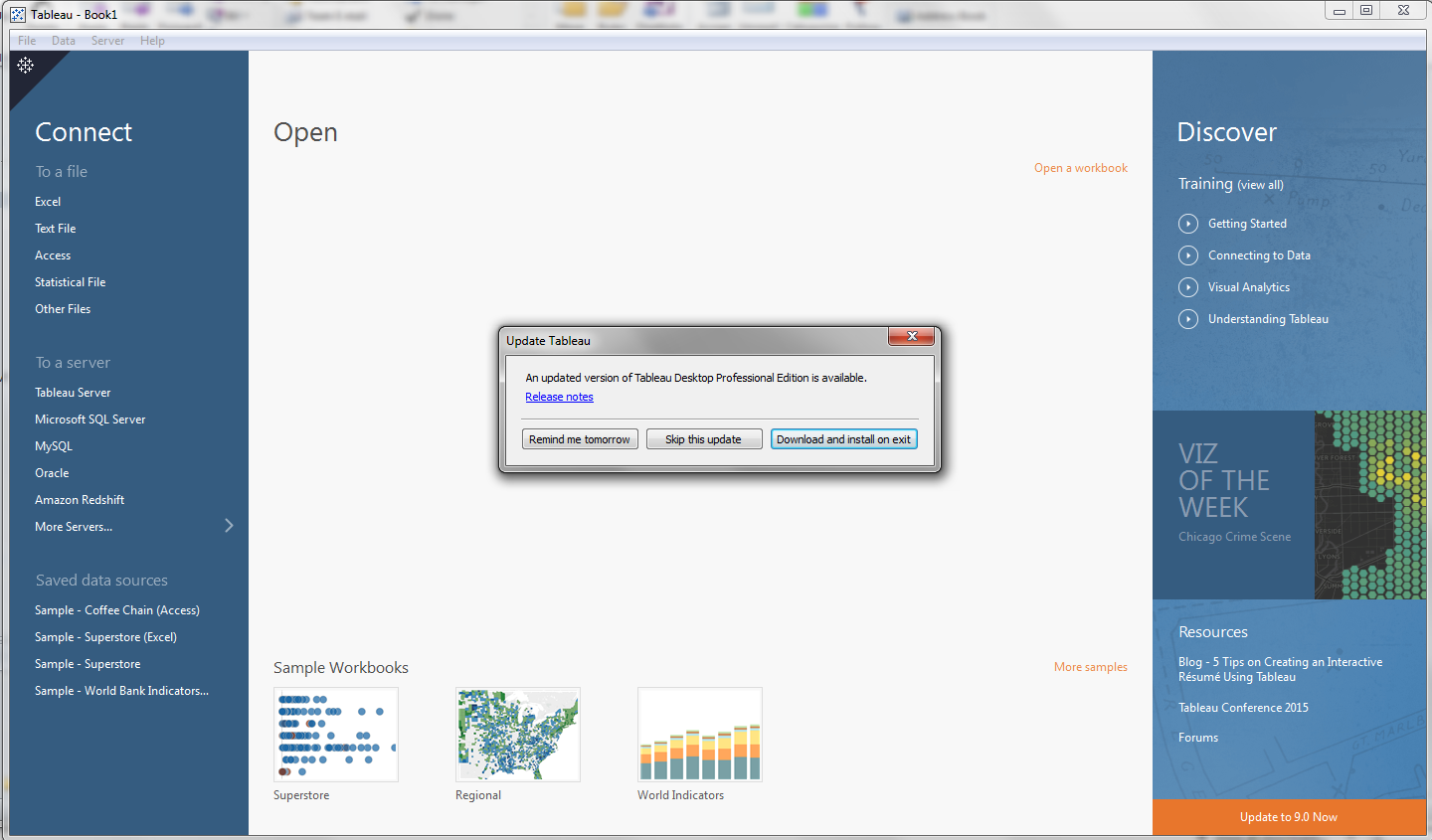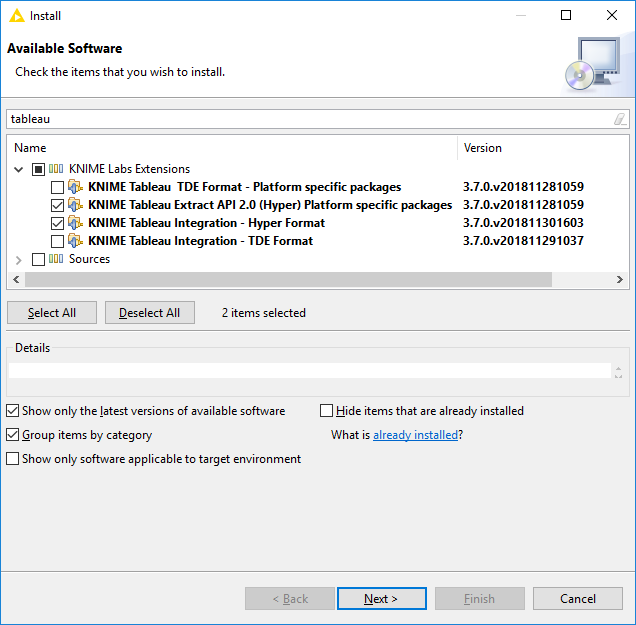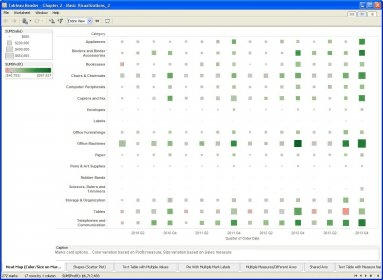

If Tableau Server is not stopped when you run the script, the script will let you know, and will offer to stop the server. On Ubuntu and Debian, run the following commands, where is formatted as major-minor-maintenance (ex: ): sudo apt-get update For information about installing dependent packages, see Installing Tableau Server on an Air-Gapped Computer Running Linux. If you want to install to a non-default location, or your organization does not allow you to use yum and you must install using rpm -i, you must also install all dependent packages separately. This is the preferred method for installing Tableau. Note: When you use yum to install Tableau Server, all dependent packages are automatically downloaded and installed. Run the following command: sudo rpm -i -prefix /preferred/install/path tableau-server.rpm You will also need to install all dependent packages. Non-default location-To install to a non-default location, you must use rpm -i.

Sudo yum install tableau-server-.x86_64.rpm On RHEL-like distributions, including CentOS, you have the option to install Tableau to a non-default location.ĭefault location-To install to the default location ( /opt/tableau/tableau_server), run the following commands, where is formatted as major-minor-maintenance (ex: ):

Do not install to a location using a symbolic link or to a directory on a Network File System (NFS) volume. The install location must be the same on all nodes. Use the package manager to install the Tableau Server package.


 0 kommentar(er)
0 kommentar(er)
